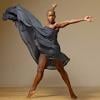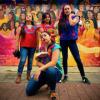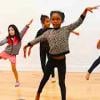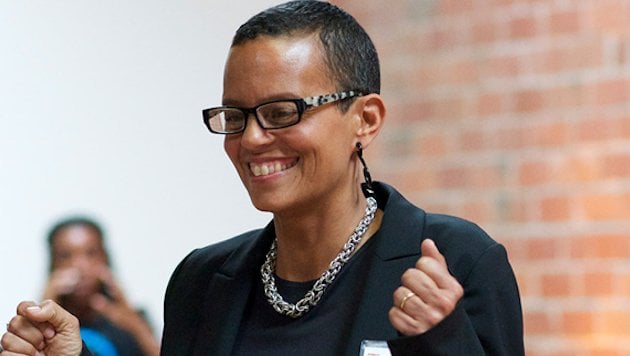
If we’re to have honest conversations about inequity in the arts, it’s going to be tough. Nothing proves the point more immediately than a phone interview with choreographer Sarah Crowell, artistic director emeritus at Destiny Arts Center, former professional dancer and nationally recognized educator. During the more than 90-minute conversation, there are moments of difficult dialogue, disciplined listening, high emotion, expressions of pain, apologies, forgiveness, patience, empathy, and time for tears or to catch one’s breath.
She had “returned” from the Dance USA annual conference (held virtually June 17–19), and suggests the subject of inequality must be approached with one critical first step: “A quote I’ve been using in workshops is: ‘The first step in getting free is admitting you have a colonized mind.’ You have to accept that everything you understand about the human experience was taught to you from a white supremacist, capitalist, patriarchal frame of thinking. That’s my guiding post right now. How do we deconstruct all of the ways we think about what is beautiful? So much of dance, theater, and performance art is about telling stories and excavating, narrating beauty.”
You spoke at Dance USA on a panel: “Speaking from the Heart: Conversations on Art, Inequity, and Hope for Transformation, Part 1.” What rose to the forefront during the discussion?
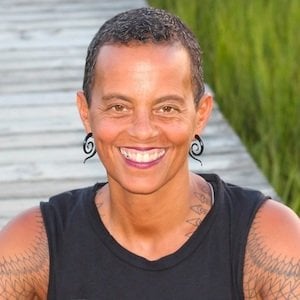
When it comes to inequities in dance, it spans all things, and the inquiry requires that we look at all levels of society. We have a particular way of seeing beauty that leaves people out. The way we see beauty is through the white male lens. In dance, George Balanchine had a great deal to do with creating an aesthetic that was seen as valid and the truth. Very slender, prepubescent, long-legged women. They would have to be white females, but it doesn’t cover all white femaleness. To me, the mind of the artist is like all the minds: colonized to think in a particular way. If what is beautiful is white and thin with long legs and very little breasts, then in the ballet world, how do we break that?
My internal work as an artist, human being, educator, and artistic director has been deconstructing that way of thinking of beauty and reimagining it — and putting it on stage and into classrooms. [Using] meticulous ways, there’s a freedom and challenge to put it in my work. Whatever the technique is that the young people are doing, it’s important they’ve worked on it hard so there’s a rigor in the movement. It can be seen in the production and the way each word was chosen in a theatrical piece. It can challenge the way we think of beauty.
What are the established structures and policies that support continued inequities now, in today’s dance scene?
The structures are in the buildings and the way art and dance are produced. The resources are put into the ballet, symphony, opera — the more traditional art forms. Classical ballet is more well-funded and more centered than other forms of dance. Even at a Dance USA conference a few years ago, the presentation was a group of young people who performed very balletic movement. These were African American kids but they were doing all balletic movement. There was not one presentation I saw that had an Afro-centric dance form represented. They were beautifully trained and doing a modern ballet piece ... but if our way of thinking of dance and what’s beautiful is broader, there would Afro-centered dance, dance that originated in Asia, dance from indigenous cultures. Where was that representation? There was no breadth to it.
We’ve gotten so narrow in our educational institutions and larger performance venues. It’s classically trained bodies that look a particular way. My interest is to challenge that: with my students, as I produce work, and as I speak about dance and theater.
How is challenging that mindset made visible in your work?
I represent different body shapes and sizes and show different types of dance; hip-hop, modern dance, and aerial are what I focus on. In terms of work represented at a national institution for dance, I’d love to see it broader.
Has the representation of dance at Dance USA become broader than it was at the time of the conference you mentioned?
For the last two years I was funded in a fellowship program at Dance USA and it was all artists doing what we now call “alternative art.” These are culturally specific dance forms, like Filipino dance, Asian dance. So I definitely see a commitment to shifting the way national dance organizations think about movement and what’s worthy to be funded and presented.
What are the best ideas put forward at the conference or embodied in your work that will lead to a more equitable future? What are the resources and where should they be directed?
Things are shifting and artists are continuing to have vibrant collaborations. The first image I think of is the collaboration between cellist Yo-Yo Ma and turf dancer Lil’ Buck. The visibility of art forms that are rich culturally but haven’t gotten the play is extremely important. As we uplift cultural forms of dance that aren’t from a Euro-centric perspective, we fund them and ask them to sit at the table to have conversations.
Angela Davis spoke at Pixar, and my youth performance company was performing. We were the finale after a conversation between Angela Davis and the Pixar diversity person. It was called Inclusion Summit. The first thing Angela said was, “Let’s deconstruct this word ‘inclusion.’” Who’s being included in what? Scrap the word “inclusion” and talk about justice, transformation.” That resonated for me because folks doing non-balletic things, all of what we call cultural, ethnic dances, are deep and rich. How do we service them and not just spend a little money on them but say really, this is the real art. The Euro-centric “real art” is the reflection of the supremacist, capitalist, patriarchal frame. How do we shake that up? We shake that up by centering other forms. Decentering whiteness in dance is the conversation that needs to happen.
What does decentering look like with young dancers in classrooms and on stage?
With my youth, what that looks like is that I have all different sizes and shapes and mostly kids of color are on stage and centered in that work. I’m centering the experience, stories and the bodies in kids of color in order to create a new narrative. We’ve been stuck in the narrative of the white body. How do we de-center that? It’s not that we now have everything be in the middle and we focus on that and ignore everything else. If we’re all in a circle and whiteness is in the center, we just add whiteness to the circle: there’s no one in the middle.
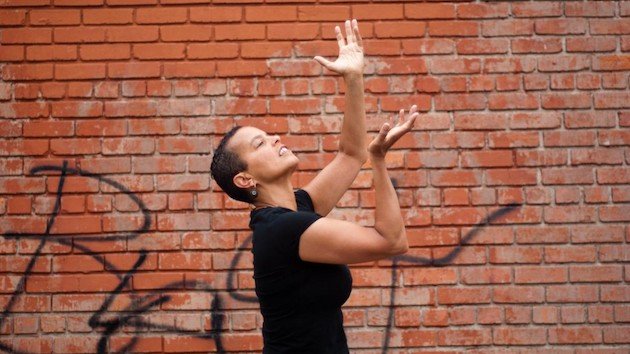
What will people have to give up in this new circle configuration?
That’s a big question. It’s not a one-person, one-perspective question. First, the conversation needs to change. From the Euro-centric perspective, resources are about the dollars and the [pieces of] pie. We’re all supposed to be competing for the slices. What about having more than one pie? What about reconstructing the notion of who gets what?
At the core of the work I’ve done is I build authentic relationships and then I tell stories from the place of authentic relationships. When we’re talking about provocative things like what is required to shake up the dance world in order to recognize we all have colonized minds and we need to be free of that to reconstruct something different, what I know is we need to sit together and have conversations and be vulnerable with each other. As vulnerable as I am allowing myself to be with you.
In order to create shift, shifts that are basic and fundamental and have played their way out in my body and the kids I teach in really destructive ways, I don’t know what it will take. I’ve been working on it for 30 years. I started ballet at 5 and I knew at age 9 that I didn’t have the right body for it. Even though I was completely disciplined and talented. People said I was brilliant on stage. But this body was not supposed to be a ballerina. That’s what was taught was good and beautiful and right.
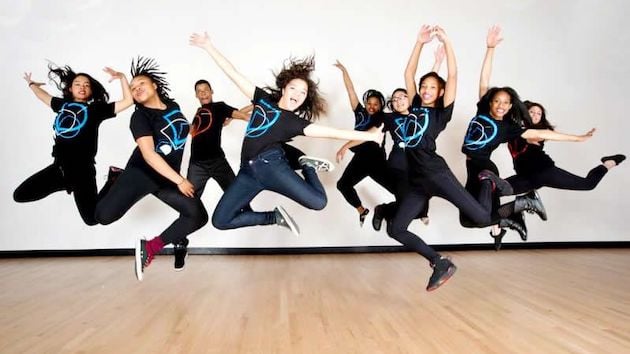
How is deconstruction and reimagining beauty achieved on a broad platform?
I’ve worked as an educator to deconstruct that for young people. How that works on a broader scale, I don’t know. Right now, as a Black queer woman, I don’t have to know. I need people to have vulnerable conversations. This time as a Black woman, it’s to see my young people organize in the streets and say they will not espouse to standards of beauty and will not allow themselves as Black people to be treated the way they have been treated.
And they will fight, they will innovate and gather, and they will reimagine: from shouting on a microphone to having drums and dancers to painting the streets with Black Lives Matter in big yellow letters. That’s the beginning of shaking up everything that I was standing on as a dancer from the time that I was 5. I performed and toured for 15 years and had my own dance company, was successful, and I still feel the oppression in my body. Until the day I die, I will be deconstructing that — not only for myself, but for everyone.
When someone asks me the provocative and extremely important questions you are asking me now, I have to go backwards. I need to be in relationship and reach a level of intimacy. Most dancers who train in classical ballet have some pain. I can look at their bodies and especially if they are Black, see emotional abuse suffered from the form itself. if you didn’t have the perfect skinny body — we all saw the movie The Black Swan, right? That was the perfect body and she was miserable, too. If this is considered this beautiful form, but we have miserable humans, what’s up with that? Art is an expression of joy and that is what it should be.
What experiences and realizations lift you up and provide hope?
You had that teacher who told you to use every part of your beautiful body, every cell. For me, when I was dancing with a dance company in Boston run by an African-American woman [Adrienne Hawkins, Impulse Jazz Dance Company], I called my mom and said I want to get a breast reduction. I can’t fit into a spaghetti-strap leotard and my body doesn’t look right. My mom had been a supporter of all of my choices: when I wanted to be a dancer, when I came out as a lesbian. But she said, “Wait a minute. If you’re think of changing a part of your body that God gave you, then I’m thinking you need to get rid of not your breasts, but get rid of the thing that’s making you want to get rid of your breasts.” That was so informative. I never wanted to cut my body after that.
For people who feel their bodies are not in the proper body for their gender and have surgery, that’s different. This is changing a body to fit into this art form to be worthy of the art form. It’s emotional because I’m passionate about the work that I do so that young people feel their bodies — as they are — are exquisite.
I heard Angela Davis talk once about critical existence and the prison-industrial complex. I thought, “I don’t get it. People who do bad things should go to jail.” But she said it’s not about abolishing prisons. It’s about imagining what is required for prisons to be obsolete. Likewise, what is required for us to know that our bodies are perfect? What would it be like for everybody to walk in their bodies feeling like they are in the temple of the divine? What would society, the arts, a theater experience be like?
I feel the Black Lives Matter exploding while we’re in a global pandemic has given me more of a radical stance. Or not even stance, but I’m challenging my imagination beyond what I thought I could. What is it like to be in love with ourselves and our world and each other? What would it require to not have policing? Let’s reimagine how we work with each other when we fall, make mistakes, cause harm? How do we work within our communities and society around causing harm? Can we rewrite the narrative of crime and punishment in dance? As artists, how do we rethink funding, classroom structures, dance studios, big proscenium theaters ... so everyone feels exquisite in their own bodies? Just saying it out loud is a revolutionary act.
Then there’s African dancers, who are drumming up the spirits with their feet, arms, bodies, and big legs. They’re allowed to inhabit their bodies and inhabit space. What are we learning from those cultural traditions? How do we find love for bodies and each other and create communities? Artists are the ones who challenge and shift those paradigms. This moment is a portal to a new reality: to accept and love our bodies as they are. It’s a piece of that paradigm shift. As women, we’re constantly trying to fit into this tiny frame. What if our bodies actually just got to relax? It’s a quintessential question because our bodies have become prisons. When I think of Lizzo [singer-songwriter Melissa Viviane Jefferson], her big, unapologetic Black body, that is a role model for me.
And about the work you were doing when the pandemic lockdown began, what is happening with The Black (W)hole* project?
First, thank you for taking this emotional journey with me — who knew I was going to go there? Hard conversations are part of reimagining, of sitting with each other in our vulnerabilities. That’s what’s happened with The Black (W)hole. It’s very ambitious, we were doing 10 performances at Laney College and six community events to honor each of the six young people who were killed or died before the age of 32 in and around the Bay Area.
I trust the artistic process. I wrote a curriculum guide about cocreating original work with young people. A huge chunk is building relationships, along with building skills in the art forms [that] are presented. There’s ideas, there’s building character, there’s a rough spot where nothing happens and then, boom, creativity happens and the show starts to write itself. It’s nerve-wracking. In creating Black (W)hole, we hit the roadblock and we were managing. But the show never started writing itself until Covid and the Black Lives Matter movement and George Floyd. We did a show before about BLM, but this was a new level, everywhere around the world there are tens of thousands of people in the streets. It’s real life.
We’re writing a show honoring Black lives and the kids were in the streets, organizing. We did Zoom rehearsals and pivoted the idea of the film. People had been afraid to be outside, but then they weren’t. because the protests happened. My filmmaker started documenting the protests being organized by our youth performance company members. I felt too nervous, as a 55-year-old, being out with crowds of people during a pandemic. So the young people were just bursting with very clear agendas and demands, spirited speakers, poets, drummers, dancers, healing circles. All the things I’ve been putting in proscenium theaters they were putting on the streets.
The film is an expression of this moment: of Covid, BLM, grieving, not being together, mental health issues emerging from the isolation, and our bodies needing to be next to each other. There’s self-acceptance, loving the body we’re in, that’s connected too. We need to be next to each other and we’re not getting that.
Conversations and footage have evolved the script. The more choreographed moments were shot this weekend, outdoors. The weather is exquisite so the spirits are conspiring with me. We’re filming in front of the murals all around Oakland that were created because the windows were being broken. The kids are remembering their choreography and we’ve been pushing to keep that energy and momentum. The protests helped them feel connected and these images in iconic Oakland locations where we’ve been filming are helping. The shooting will be done by the end of July. August will be film editing and more fundraising for completing the film. It will probably be done by end of summer.
This seems like a perfect image for a post-Covid world: Young people out on the streets using tools they’ve learned and empowered to express their vision for the future.
The young people are taking what they got at Destiny and from other teachers, family members, and mentors they’ve been exposed to like Angela Davis, [Black Panther activist] Ericka Huggins, Alicia Garza ]BLM cofounder]. Watching them blossom into something much more powerful than I could have imagined, I’m ecstatic. Proud is a meager word, but I’m proud and hopeful for the future because of them.
Correction: The correct name of the work of art discussed above is The Black (W)hole, not The Black W(hole), as originally published.
*(Led by Crowell, The Destiny Arts Youth Performance Company, and collaborating artists — Rashidi Omari, Marc Bamuthi Joseph, Yoram Savion of YAKfilms, Risa Jaroslow of the Elders Project and others — have reconfigured the original live performances and installations into a feature film.)


